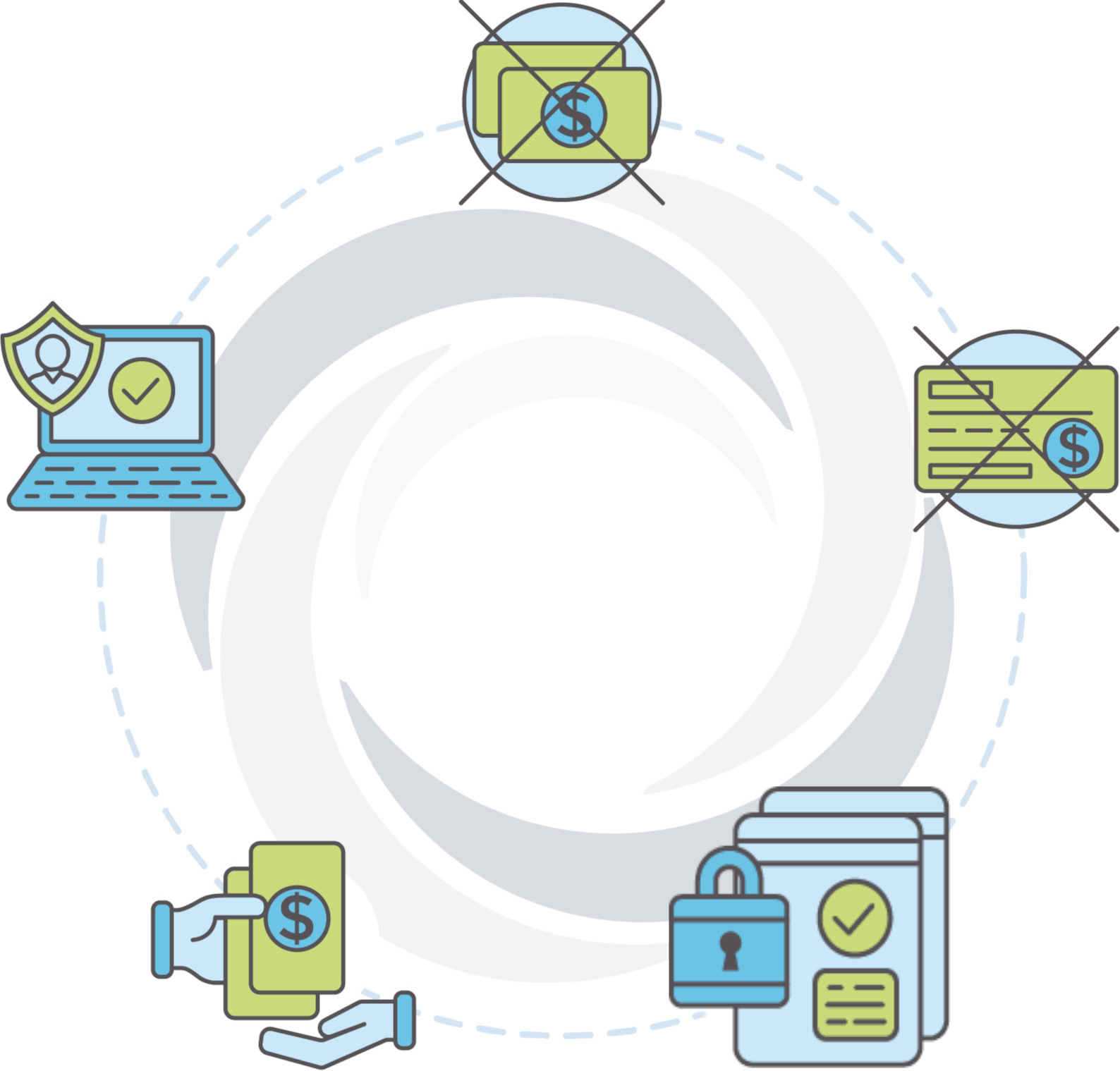Spinal Cord Injuries
Accidents and incidents of all kinds can lead to spinal cord trauma and injuries. Depending on the severity of the injury, your mobility and life may be forever changed.
Spinal cord injuries are often classified as either incomplete or complete. In a case of an incomplete spinal cord injury, an accident victim may still have some sensation and mobility in the affected part of their body. A complete spinal cord injury, on the other hand, defines an injury in which the victim loses all feeling and mobility in the affected area.
Spinal cord injuries can result from:
- Slip and fall incidents
- Car accidents
- Medical malpractice
- Acts of violence
- Sports-related accidents
According to data from the National Spinal Cord Injury Statistical Center (NSCISC)[1], there are approximately 18,000 new cases of spinal cord injuries every year. Those living with spinal cord injuries are often faced with many challenges, including the financial burden of recovery and any accommodations they’ll have to make in their new reality. Pursuing a spinal cord injury settlement can help you maintain a better quality of life and afford the treatments you need.
Pre-Settlement Funding for a Spinal Cord Injury Lawsuit
Your spinal cord injury may affect your life in different ways. For example, you may seek settlement funding for a back injury at work if you’re unable to work due to the injury.
No matter how you sustained your spinal cord injury, we want to help you. We provide pre-settlement funding for a variety of spinal injury lawsuits, including:
- Spinal cord injuries at work
- Spinal cord injuries from slipping on ice
- Slip and falls at retailers such as Walmart
- Personal injury
- Car accidents
- Railroad back injuries
You deserve compensation for the full extent of the symptoms you are enduring. Spinal cord pre-settlement funding could help you cover the expense of treatment while waiting for a case to settle.
Common Spinal Cord Injuries
Some of the common types of spinal cord injuries that result from accidents include:
- Bulging discs, which occur when the discs in the spine become compressed. This can lead to pain and challenges with mobility.
- Herniated discs, which occur when a hole or tear in the outer covering of the disc puts pressure on nearby nerves. It is generally considered more severe than a bulging disc.
- Fractured vertebrae, with symptoms that can include tingling, numbness, pain in the back or neck, uncontrolled muscle spasms, and more.
- Thoracic spine injury occurs when a bone in the spine collapses. Also referred to as a vertebral compression fracture.
- Cervical spine injuries can be serious or even fatal, as it is an injury to the C5 vertebrae and higher.
- Lumbar spine injuries impact the lumbar vertebra (L1-L5) and can result in loss of function in the hips and legs.
- Brown-Sequard Syndrome can occur from trauma resulting from an accident, such as a puncture wound to the back. It’s characterized by weakness or paralysis on one side of the body.
- Central Cord Syndrome includes impairment in the arms, hands, and to a lesser extent, the legs
Understanding Symptoms of Spinal Cord Injuries
Depending on the type of accident that caused your spinal cord injury, you could be experiencing a multitude of symptoms. The following are symptoms of spinal cord injuries[2]:
- Loss of movement in any capacity
- Loss of bowel or bladder control
- Exaggerated reflexes
- Stinging sensation
In severe spinal cord injuries, quadriplegia (also known as tetraplegia) or paraplegia may result.
What is the Average Settlement for a Spinal Cord Injury?
In law, as in medicine, no single answer applies to everybody. Each spinal cord injury case is someone’s life that has been permanently impacted in one or many ways. In determining a potential spinal cord injury lawsuit settlement, consider the following factors that can influence a settlement:
- Loss of future earnings potential
- Was gross negligence involved?
- What is the current amount of the medical bills?
- What is the cost of the future healthcare needs?
- Are home modifications required for handicap accessibility?
Settlement amounts can vary widely, but depending on the extent of injuries the case could be worth $1 million or more. Pre-settlement funding helps people access some of their awards early.
What to Do After a Spinal Cord Injury?
After an injury, it can be difficult to know what to do next. Consider the following:
- Focus on your recovery – Recovery in the case of a spinal cord injury often means adjusting to a new state of “normal.” Rehabilitation can include physical therapy, occupational therapy, and even counseling.
- Document/track all of your medical expenses – As challenging as it can be it is important to document all expenses related to your injury, be thorough and include the days and times of appointments, how many miles you traveled to get there, whether someone took you to your appointment, the cost of your prescriptions, co-pay amounts, and any other related expenses.
- Understand timelines and your options for compensation – In order to get to a settlement discussion, you need to have a doctor assess the extent of your spinal cord injury. In some cases, it could take 6 months to simply understand the level and complexity of the injury. Although an average injury claim settles in about 18 months[3], catastrophic injuries, such as spinal cord cases, can take longer due to their complexity.
If your case qualifies for pre-settlement funding, we purchase a portion of the proceeds of the anticipated court judgment or settlement and provide you with funds. We only get paid if you win your case or reach a settlement.
How long does it take for you to get approved for pre-settlement funding for a spinal cord injury lawsuit?
At USClaims, we aim to process all claims as quickly as possible. You can speed up the process by starting the claim and having as much documentation as possible available before contacting us.
What are the requirements for pre-settlement funding for your spinal cord injury lawsuit?
In general, we expect individuals to have a lawyer representing them on a contingency basis and to have already started their claim before they reach out to us. We assess cases individually and will offer pre-settlement funding to those who have a strong case against the defendant. See our pre-settlement FAQ for more information.
How long does it typically take to receive your settlement in a spinal cord grocery store lawsuit?
After approval and an accepted purchase request, you can expect to receive your advance within 24 hours.
How Much Pre-Settlement Funding Can You Receive for Your Spinal Cord Injury Lawsuit?
USClaims can fund up to 12.5% of the anticipated gross case value. The average advance is around 10% and claimants will not have to pay back the advance following denied claims. We commit to ethical and transparent business. If you have a strong claim and a lawyer representing you on contingency, apply now or call us today at 1-877-USCLAIMS to learn more.
FAQs
What is the timeline for receiving spinal cord injury pre-settlement funding, and how long does it typically take to receive funding?
It can take some time for the application to be accepted, but once it is and the purchase agreement is completed, you should be able to expect the pre-settlement funding within 24 hours.
How is the amount of spinal cord injury pre-settlement funding determined?
The amount of funding varies based on the type of injury you experienced and the expected gross value of your award if your claim is successful. Typically, the average pre-settlement amount hovers around 10% of the gross value, but it can be as high as 12.5%.
Sources
- Traumatic Spinal Cord Injury Facts and Figures at a Glance 2023 SCI Data Sheet.
- Mayo Clinic. “Spinal Cord Injury – Symptoms and Causes.” Mayo Clinic, mayo clinic, 2 Oct. 2021, www.mayoclinic.org/diseases-conditions/spinal-cord-injury/symptoms-causes/syc-20377890.
- Pacificwest. “The Timeline for Catastrophic Injury Settlements.” Pacific West Injury Law, 11 Mar. 2022, pacificwestinjury.com/blog/catastrophic-injury-settlement-timeline/. Accessed 12 July 2023.





